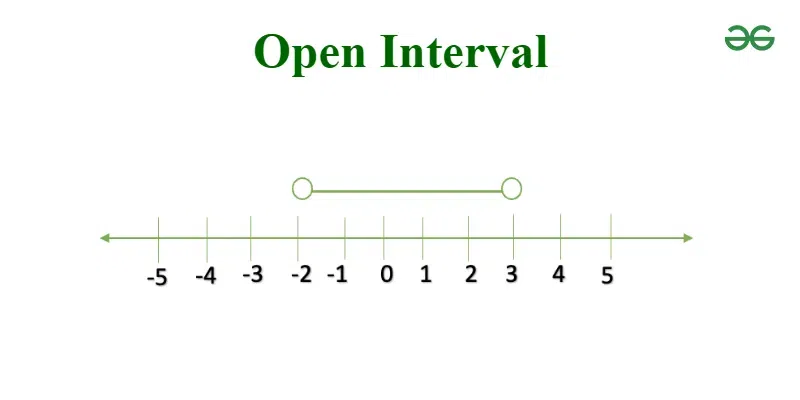
|
|
A closed interval includes its endpoints and is enclosed under square brackets. An open interval does not include its endpoints and is enclosed under parenthesis. In this article, we will explore the difference between an open interval and a closed interval, along with the open interval and closed interval definitions. Let’s start our learning on the topic “Difference Between an Open Interval and a Closed Interval”. What is Open Interval and Closed Interval?An open interval does not involve its end values, whereas a closed interval involves it end values. The open interval is represented by the parenthesis and the closed intervals are represented by square brackets. In the number line representation, the open interval is represented by circle at the end points, whereas the closed intervals are represented by filled or darkened circle at the end points. Open Interval DefinitionAn open interval is an interval which does not contain the end points. It is represented by parenthesis (). An example of open interval is (a, b), where a and b are not included. Open Interval ExampleAn example of open interval is a number greater than -2 and less than 3 i.e., open interval (-2, 3). The open interval (-2, 3) includes the numbers from -2 to 3 where -2 and 3 are excluded. Open Interval in Number Line RepresentationThe open interval in the number line is represented by a circle. Below number line shows the open interval representation in number line. 
Closed Interval DefinitionA closed interval is the interval which contains the end points. It is represented by square brackets. An example of closed interval is [a, b] where a and b are included. Closed Interval ExampleAn example of closed interval is numbers greater than or equal to -2 and less than or equal to 3 i.e., closed interval [-2, 3]. The closed interval [-2, 3] includes the numbers from -2 to 3 where -2 and 3 are included. Closed Interval in Number Line RepresentationThe closed interval in the number line is represented by a filled circle. Below number line shows the closed interval representation in number line. 
Operations on Open and Closed IntervalThe operations on open and closed intervals are:
Union of IntervalsThe union of two intervals P and Q contains all the elements present in one or both the intervals. Examples Some examples of union of two intervals are given below.
Intersection of IntervalsThe intersection of two intervals P and Q contains the elements present in both the intervals. Examples Some examples of union of two intervals are given below.
Complement of IntervalThe complement of interval contains the elements that are not included in the interval. Examples Some examples of complement of interval are given below.
Difference Between Open Interval and Closed IntervalThe below table represents the difference between an open interval and a closed interval.
Also, Check
FAQs on Open Interval and Closed IntervalWhat is the Difference Between an Open Interval and a Closed Interval?
What is the Definition of Closed Interval?
What is an Example of Open Interval?
What is the Symbol of Open Interval?
What is the Symbol of Closed Interval?
What is Semi-Open or Semi-Closed Interval?
|
Reffered: https://www.geeksforgeeks.org
| Class 11 |
Type: | Geek |
Category: | Coding |
Sub Category: | Tutorial |
Uploaded by: | Admin |
Views: | 16 |